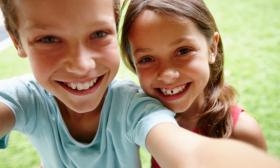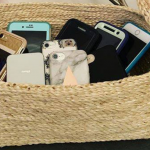How to help selfie-absorbed tweens and teens gain some perspective on a trend that’s really about connecting and communicating.
 Yalda T. Uhls
Yalda T. Uhls
Director of Creative Community Partnerships at Common Sense Media |
Mom of two
If you have a tween or a teen, the recent news that more people have died from taking selfies than from shark attacks probably came as no surprise. More than 90 percent of teens post photos of themselves online. And though the risk of death is highly unlikely, parents are naturally concerned about this trend that seems to be the very symbol of a self-absorbed generation. By understanding the real reasons kids take and share selfies, and how it affects both their self-image and their worldview, parents can help kids embrace the positive sides of selfie expression while avoiding the negatives.
 Most kids use selfies as a way of communicating with their friends and celebrating a moment. Psychological researchers report that online and mobile social media are an integral part of normal adolescent needs such as developing one’s identity and friendships. And as they mature and feel more confident in their identities, teens use selfies to express themselves and show the world who they are becoming.
Most kids use selfies as a way of communicating with their friends and celebrating a moment. Psychological researchers report that online and mobile social media are an integral part of normal adolescent needs such as developing one’s identity and friendships. And as they mature and feel more confident in their identities, teens use selfies to express themselves and show the world who they are becoming.
Social media and selfies also are a natural — and possibly irresistible — draw for tweens and teens. Adolescents have a heightened sense of “the imaginary audience”; this sense is a psychological state where one assumes others are looking and thinking about you at all times. Posting self-portraits online — and most importantly, getting feedback — confirms the idea of an imaginary audience.
It’s important to remember that parents contribute to our photo-oriented culture. We share and post videos of kids from their births. We give young children camera-enabled toys that teach them to take their own pictures. We validate experiences by posting numerous family vacation pics.
Our culture’s constant navel-gazing isn’t necessarily bad or dangerous, but turning the camera lens on others can reveal things about the human condition that kids can’t see if they’re always looking at their own images. Parents can help kids avoid some of the extremes of the selfie culture, such as obsession with being camera-ready, over-sharing, fear of missing out, and yes, actual physical danger such as when kids take selfies while driving. So, as much as your kids document themselves, get them to think about the other side of the lens.
When kids are younger:
- Consider how your future teen may interpret the picture. When you post a selfie of you and your child on your social networks, ask yourself, would they be embarrassed?
- Be aware that many toys embed cameras. These can encourage kids to start taking photos of themselves long before they have the maturity to understand what this means.
- Consider banning selfies for a while. For a period after you first give your kid a camera, have him or her focus on photos of other people and their environments. Talk about what they see through the lens.
When kids are older:
- Help your child think critically through what their friends are posting. For example, ask your teen to think about what their peers are wearing, who they’re with, how they pose, and whether their photos might present an idealized version of their lives.
- Help your teens think beyond the selfie. Take them to a photography exhibit or enroll them in a photography class.
- Look for teachable moments. Discuss selfie culture gone wrong, as in kids posting inappropriate content, sexting photos, and so on.
View all posts by Yalda T. Uhls here.
Yalda T. Uhls is the author of Media Moms & Digital Dads: A Fact-Not-Fear Approach to Parenting in the Digital Age.
This post was originally posted by Common Sense Media on 10/27/15.
 About Common Sense Media
About Common Sense Media
Common Sense Media is dedicated to improving the lives of kids and families by providing the trustworthy information, education, and independent voice they need to thrive in a world of media and technology. We exist because our kids are growing up in a culture that profoundly impacts their physical, social, and emotional well-being. We provide families with the advice and media reviews they need in order to make the best choices for their children. Through our education programs and policy efforts, Common Sense Media empowers parents, educators, and young people to become knowledgeable and responsible digital citizens. For more information, visit us at www.commonsense.org.






One Comment on “The Science of Selfies”
I myself think selfies are just wrong to far,kids need to understand the damage some photos can cause!